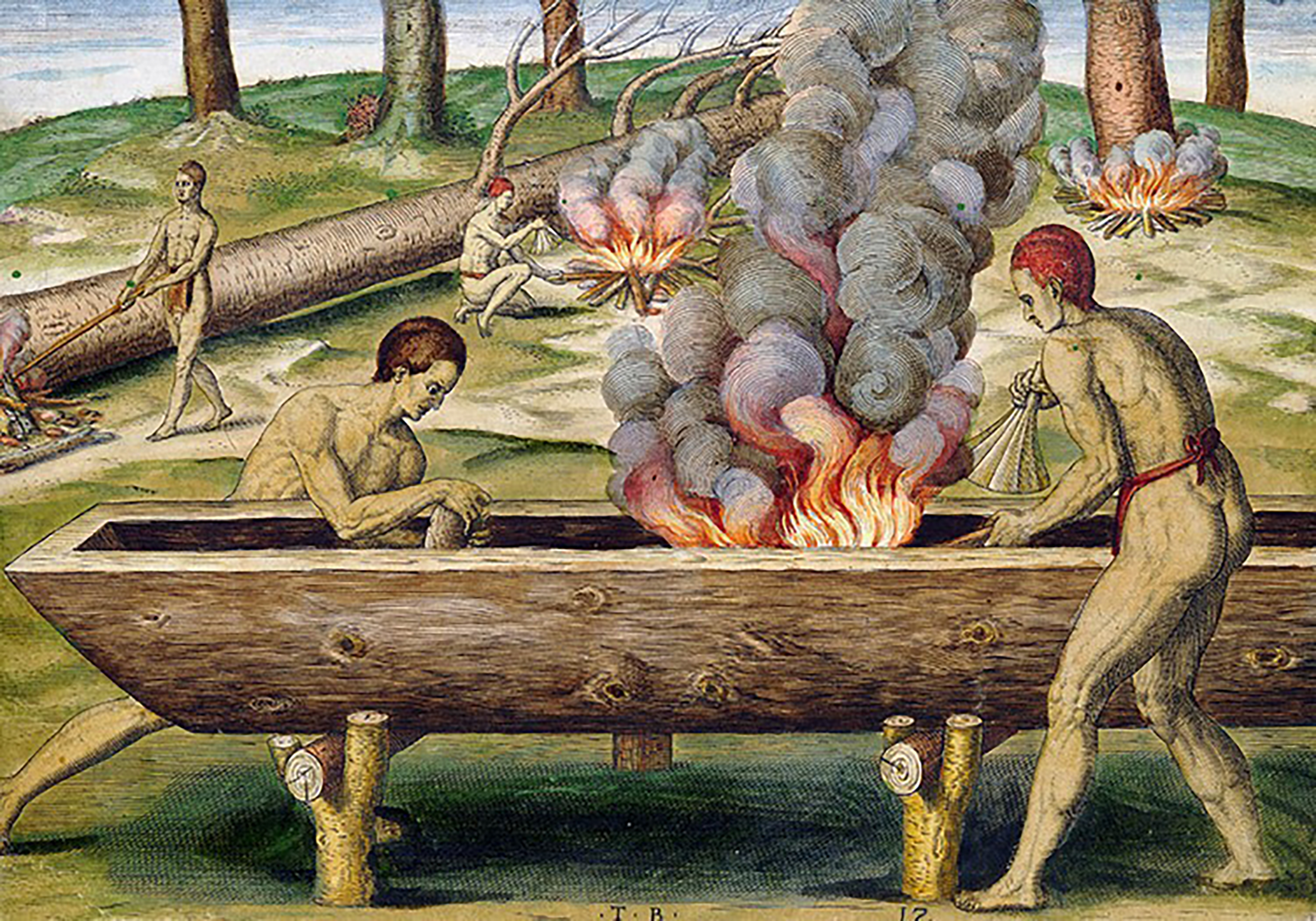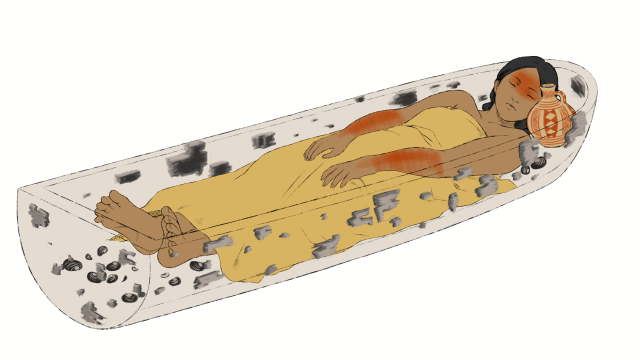About 900 years ago, a woman between 17 and 25 years old died and was buried near the modern border of Chile and Argentina. But unlike other people buried nearby, she was entombed in a canoe.
The discovery — details of which are published in PLoS ONE — pushes the practice of ritual canoe burial farther south in South America than was previously known. The archaeological team suspects it was a symbolic means of helping the deceased travel to the afterlife.
“At first we did not understand what we saw, since it was something unknown for Patagonian Argentina,” said Alberto Enrique Pérez, an archaeologist at the Universidad Católica de Temuco in Chile and the study’s lead author, in an email to Gizmodo. “We were pleasantly surprised.”
The canoe burial emerged during excavations between 2012 and 2015 at Newen Antug, an archaeological site in the Patagonian foothills. The site sits on the outskirts of San Martín de los Andes, across the street from some hotels. Newen Antug is about half a mile from a lake, which the study authors think may be connected to the symbolic burial method.
The woman is called Individual 3; two other human bodies were previously found at the same site. Those remains are more recent, dating to around 1482 CE, and they were not buried in canoes. Pérez said that Individuals 1 and 2 were likely killed by the Spanish, as evidenced by trauma on their skeletons and amputated limbs.

Individual 3 dates to about 1142 CE — before the Spanish arrived in South America — and she was between 17 and 25 years old when she died, though the researchers aren’t sure what ended her life. A large jug was placed next to her head. Though much of the canoe (or wampo) around the body had rotted away, nearly 600 fragments of wood still remained.
Looking at the fragments under a microscope, the team determined that the wood was Chilean cedar, and some of it was charred. That lends credence to the assumption that it was once a canoe, as historical accounts detail Indigenous South Americans making dugout canoes by burning away the interior wood. Though the practice is well-known in Chile, this is the first evidence of it in Argentina. It’s also the southernmost known canoe burial in South America.
“Historical sources refer more to burials in wampo or trolof [wooden canoes] among male individuals, but that is more recent,” Pérez said. “The Newen Antug find may show that it was a more widespread practice amongst both genders.”
The canoe burial is thought to symbolise the voyage the deceased takes to their ultimate resting place. Ship burials on land were common in other cultures as well, perhaps most famously among the Vikings.
Since the ancestors of the Indigenous Mapuche people of Chile and Argentina often inhabited shores, the study authors believe the ancient woman’s canoe burial may be tied to the importance of water in her life.
But any connection between this woman and the two individuals buried nearby some 200 years later is unclear, for now. But the team hopes that the recent discovery inspires more investigation of the ancestors of modern Mapuche people and their culture.
More: 9,000-Year-Old Burial of Female Hunter Upends Beliefs About Prehistoric Gender Roles
